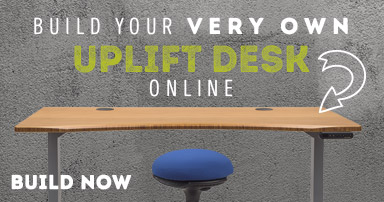Pencils Up! Exam Ergonomics
Posted by Human Solution on Dec 3rd 2010
In addition to my duties at Human Solution, I’m also a full-time graduate student. So I’m well aware that final exams are either underway or about to start on campuses nationwide. I thought now would be an excellent time to take a look at ergonomics for taking tests.
Having used quite a bit of school furniture, I can tell you that much of it is not ergonomically designed. It is a series of one-size-fits all plastic chairs and laminate tables that are the same size for users that are 6’3” and 4’10”. There are a couple good ways to combat this problem though:
The first is bringing a seat cushion of some kind. This can help deal with 3 problems:
- The seat is too low for you
- The table surface is too high
- The seat is too deep
In the first case, you are so tall that the seat’s low height forces you to sit with your knees up in the air when your feet rest flat on the floor. This puts pressure on the joints of the knees and feet. Sit on the cushion to raise yourself up a bit and lessen that angle. Sitting on a cushion also addresses the issue that the table is too tall for you. Reaching way up to write is not good for your wrists, elbows, shoulder, or even your neck muscles. A cushion under you helps lessen the angle at which you must hold your forearms to reach the desk surface. Finally, a back cushion can help if your legs are short and the seat is too deep. Without doing so, you may have to sit upright with no back support, which can keep you alert at first, but will cause strain in your back pretty quickly.
A second thing you can do is bring something to rest your feet on if they cannot touch the ground. This will prevent pressure on the back of your knees and thighs as your legs dangle off the chair.
Finally, take an eye break every once in a while if you are not straining for time. Look across the room for a minute just to give your eyes a chance to focus at a different distance.
Exams are no fun, but using these tips, you can make them a bit more comfortable, and maybe even perform a little better, due to less discomfort. We at HS wish you the very best on your tests and a long, restful winter break.




